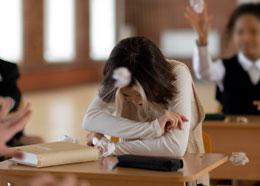Half of Canadian kids witness ethnic, racial bullying in school

As Canada grows and changes, becoming more diverse every year, new generations of children are immersed in a reality that can look far different than that of their parents or grandparents.
And while diversity in schools is largely an accepted and comfortable fact of life for Canadian children, a new study from the non-profit Angus Reid Institute in partnership with the University of British Columbia finds some – in particular those who identify as a visible minority – struggling to fit in more than children who do not identify this way.
Indeed, this conversation with 12- to 17-year-olds in Canadian schools finds that racially motivated bullying and insults are a reality in more ethnically diverse areas of the country.
While half of kids who describe their school as made up of mostly students from similar backgrounds say that these racial issues are something they have seen, this rises to two-thirds among those who say their school is more diverse. Further, visible minority students are three times as likely as white children to say that they have faced personal abuse. Indigenous children are twice as likely to say this.
That said, most Canadian children say that they have an outlet to talk about these issues. Indeed, nine-in-ten say that they talk to their parents or other family members about it. There may, however, be more for teachers and school staff to do. Three-in-ten victims of bullying or abuse say that staff in their school were either unaware of it or just ignored it.
More Key Findings:
• Children in more diverse schools are significantly more likely to say that they have learned about racism in Canada’s history, Indigenous treaties, residential schools, and multiculturalism, than those who say their student body is made up of kids from mostly the same background.
• Most Canadians kids are comfortable with their peers wearing different clothes, celebrating different holidays and speaking different languages than they do. Approximately two-thirds say it’s not a big deal, while one-in-ten say they enjoy it.
• Among those who say that they have been the target of ill-treatment, 43 percent say it is something that they carry with them after it happens. More than half (57%) say it doesn’t bother them, or that they’re able to move past it.
• Older kids, between the ages of 15 and 17, are more likely than 12- to 14-year-olds to say they talk about racism with their friends – 73 percent to 56 percent respectively









